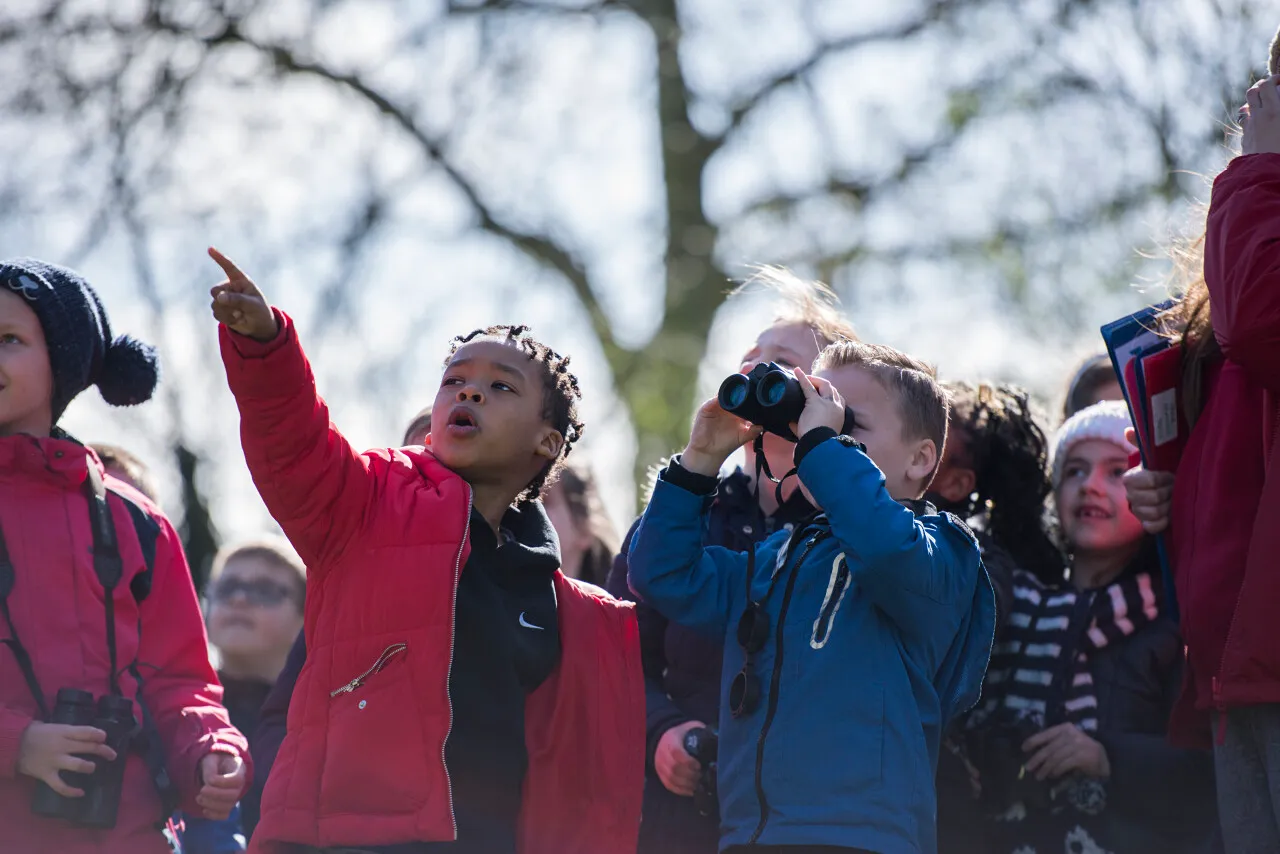Conwy
Llandudno Junction itself, close to Tescos and Cineworld leisure park. Junction 18 of the A55. The reserve is on the south side of the roundabout.Closed | Opens 9:00 amSee opening timesAdventures await at Conwy – a wetland wonderland where Starlings dance through the sky on winter afternoons, and orchids carpet the grassland in summer.
About
⚠ Our café will be operating with reduced hours from the 1st - 5th of April, opening between 10am-3pm ⚠
Conwy nature reserve is proof that wonderful things can happen when we work with nature in mind. What was once waste material, dug out when the A55 road tunnel was built, has been transformed into a haven for wetland wildlife and a brilliant place for family adventures. Head to the reserve late on a winter afternoon to take in the sight, sound and rush of wings, as tens of thousands of Starlings congregate to roost in the reedbeds, throwing shapes across the sky in a spectacular murmuration.
Stroll along a boardwalk, through a reedbed, to the sounds of Reed Warblers in summer and Water Rails in winter. Then look across two lagoons, one with shallow water and the other much deeper, which attract waders and waterbirds, especially from August to March. These are best for birds at high tide, when the river pushes waders to roost and feed on the islands.
Follow the trails through mixed scrub and grassland, dotted with temporary pools – loved by dragonflies and butterflies – and colourful with orchids in summer. Look out for the rare coccinea form of Early Marsh-orchid and the bumblebee-mimicking Bee Orchid. The final part of the circular trail takes you along the edge of the estuary, overlooking mudflats and saltmarsh, with a backdrop of the Carneddau mountains beyond.
The lagoons provide a refuge for hundreds of waders that move off the estuary at high tide. Vegetation on the islands is cut short each autumn to make them suitable for roosting Curlews, Redshanks and grazing Wigeons. We reshape the islands, from time to time, making sure there are plenty of muddy edges for waders to feed. Water in the lagoons is fresh, not tidal, so we rely on rainfall to fill it during the winter, with additional water pumped from the nearby Afon Ganol.
We aim to fill the lagoons by April, making it harder for mammals to get to the islands where birds nest. Natural evaporation and transpiration reduce the water level (by up to 1cm every day!), so that by mid-July, there is insect-rich mud for waders dropping in to Conwy on their way from northern Europe to Africa.
The southern half of the reserve is grazed year-round by Carneddau Mountain Ponies, a hardy local mountain breed, happy to eat grass, bramble, rush and reeds. They break up the habitat, keeping it in good condition for a variety of wildlife, particularly pioneering flowers that like the low-nutrient soil, and moths whose caterpillars live in the reedbeds and grassland. The ponies' manure is great for beetles and flies, so good for birds too.
At a glance
Find out about school visits
Contact Conwy
conwy@rspb.org.uk conwylearning@rspb.org.uk RSPB Conwy Nature Reserve, Llandudno Junction, Conwy, LL31 9XZ 01492 584091
